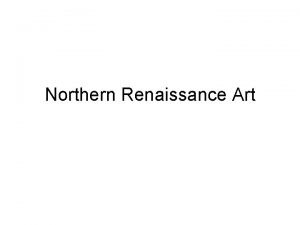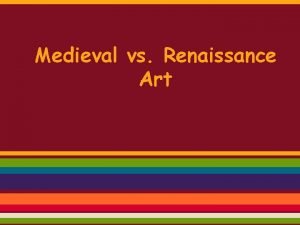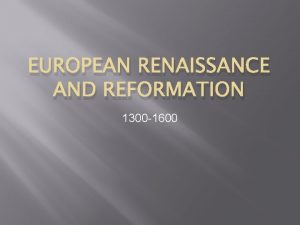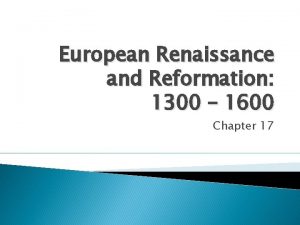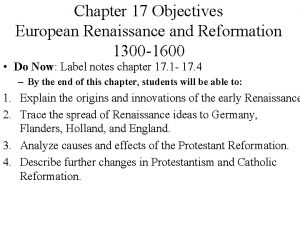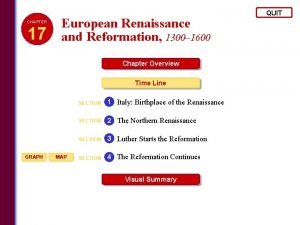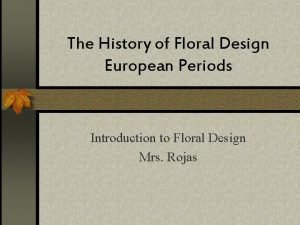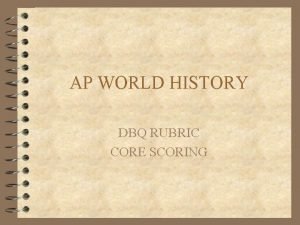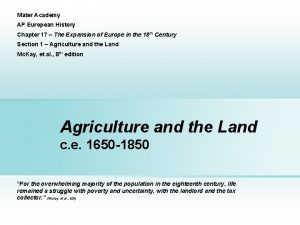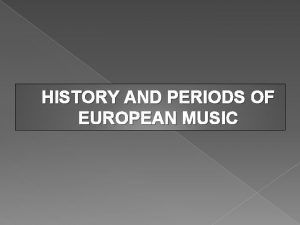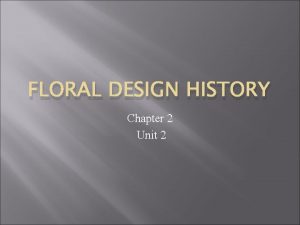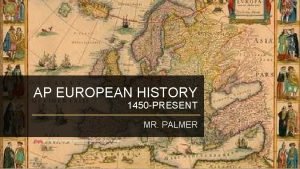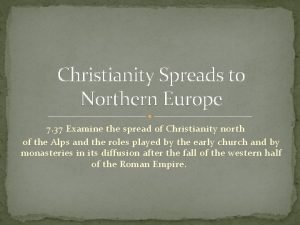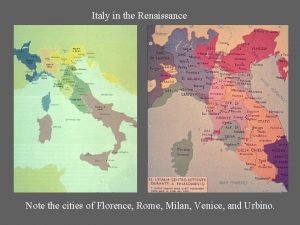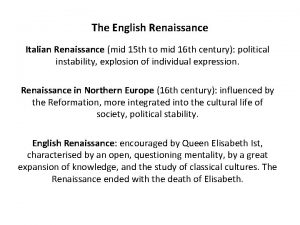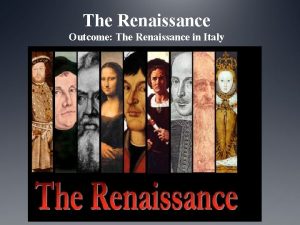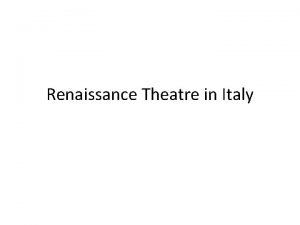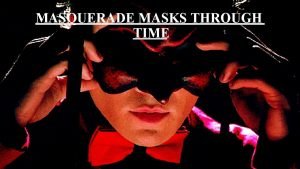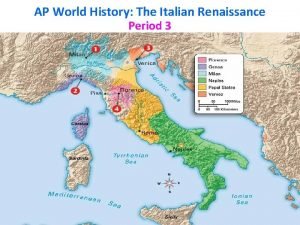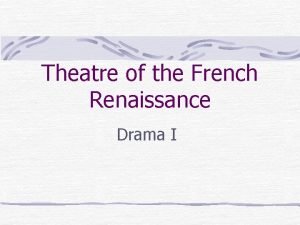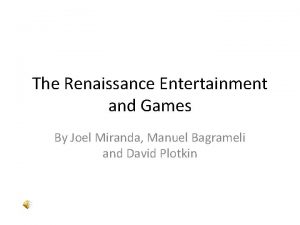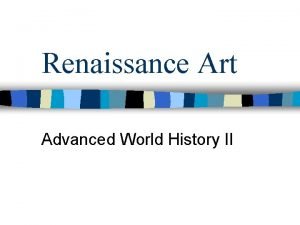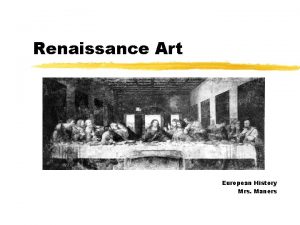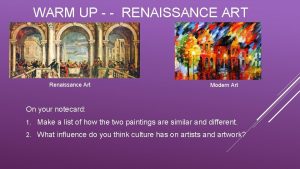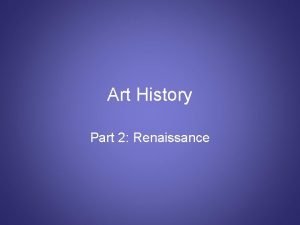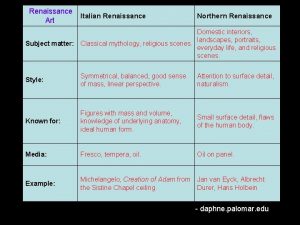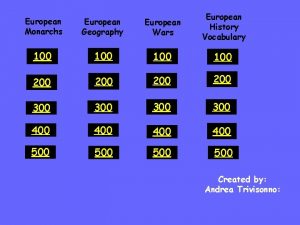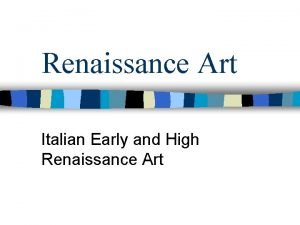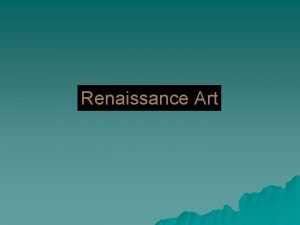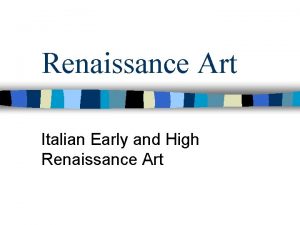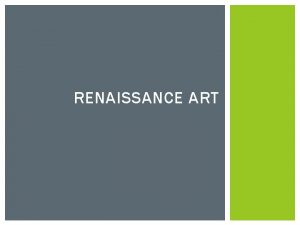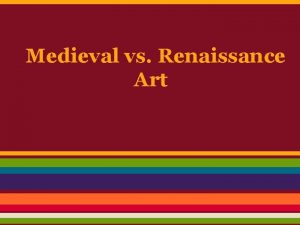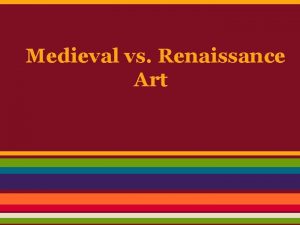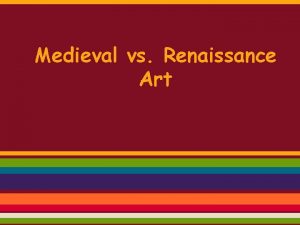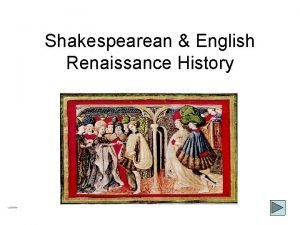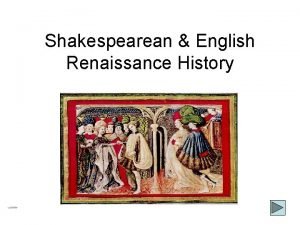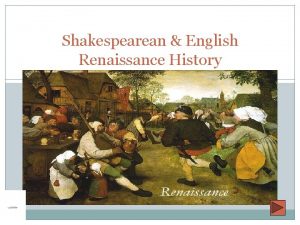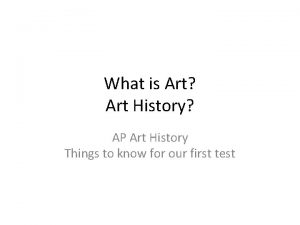RENAISSANCE ART A P European History Renaissance Art
































- Slides: 32

RENAISSANCE ART A. P. European History

• • • Renaissance Art The 1400 s (quattrocentro) and the 1500 s (quincecentro) – creativity in painting, architecture, and sculpture Florence led the way in all of the arts Rome took the lead in the “High Renaissance” (1500 -1527) – – – • Leonardo Raphael Michelangelo Mannerism – 1520 -1580 – more elaborate in response to artists’ new status – More technical with elongated figures


Art and Power • Early Renaissance Italy (early 15 th cent) – powerful groups commissioned art – – • Florentine cloth merchants – Brunelleschi’s Dome Florentine govt – Michelangelo’s David Subject matter – religious – Art served an educational purpose - spread doctrine, profession of faith, recall sinners

Brunelleschi’s Dome Ghiberti’s Gates of Paradise Michelangelo

Expenditures • Expenditures – – • The palace was the chief luxury – a symbol of power Bedroom was most important • – – • Medieval – military gear, employ knights Renaissance - housing Intricately carved wooden bed, a chest, and a bench Later had chairs, tables, tapestries, paintings Private chapel – center of religious life within household

Art and Power • Later 15 th cent – individuals and oligarchs sponsored works of art – Purpose: glorify themselves and family – Rich had family frescoes, chapels, etc. • Subject matter – more secular – Classical motifs – gods and goddesses – Portraits of patrons

Birth of

Medieval Art • • Religious Human body – formal, stiff, artificial – Only shown in a spiritualized and moralizing context

Renaissance Art - Techniques • • Portraits of well-known figures – reflects individuality and power Realism and Accuracy – studied human corpses and drew from live models – – More scientific and natural Women – voluptuous; Men – strong and heroic

Giotto’s Dante

Verrocchio’s Statue of Bartolomeo Colleoni (Venice General)

Renaissance Art - Techniques • • • Perspective – make distant objects look smaller than closer ones, appears 3 -D Chiaroscuro – contrasting light and dark “International style” – named for the wandering careers of artists and the trade of art works – Rich colors, decorative detail, swaying forms, curvilinear rhythms

Baglione’s Sacred and Profane Love

• Artists – – Leonardo da Vinci – Mona Lisa Michelangelo – David – follows Greek tradition • – – Sistine Chapel Raphael – School of Athens – imaginary gathering of Greek thinkers Donatello – sculptor



Vincenzo Peruggia











Renaissance Architecture • • Rejected the Medieval Gothic Style Adopted columns, arches, domes that the Greeks and Romans favored


Status of the Artist • • Social status improved – a free intellectual worker Usually worked on commission Reputation and wealth depended on support of powerful patrons Distinguished artists were respected

Status of Artists • Boasted about their achievements – Signed works and incorporated themselves as bystanders • • Artists considered genius and divine Art created by and for the highly educated minority
 Italian renaissance vs northern renaissance
Italian renaissance vs northern renaissance Art emerging in europe
Art emerging in europe Renaissance vs medieval art
Renaissance vs medieval art Middle ages
Middle ages European renaissance and reformation
European renaissance and reformation European renaissance and reformation answer key
European renaissance and reformation answer key European renaissance and reformation chapter 17
European renaissance and reformation chapter 17 European renaissance and reformation chapter 17
European renaissance and reformation chapter 17 Chapter 1 european renaissance and reformation
Chapter 1 european renaissance and reformation European floral design history
European floral design history 1993 europa
1993 europa Flowers used in the english georgian period
Flowers used in the english georgian period Ap dbq rubric
Ap dbq rubric Greek period floral design
Greek period floral design Ap european history chapter 17
Ap european history chapter 17 Music history periods
Music history periods Eastern european cuisine history
Eastern european cuisine history Chapter 2 history of floral design
Chapter 2 history of floral design Palmer european history
Palmer european history Outcome of renaissance
Outcome of renaissance Italian renaissance vs northern renaissance venn diagram
Italian renaissance vs northern renaissance venn diagram The renaissance outcome renaissance painters/sculptors
The renaissance outcome renaissance painters/sculptors Last supper labeled
Last supper labeled The renaissance introduction to the renaissance answer key
The renaissance introduction to the renaissance answer key Italian renaissance vs english renaissance
Italian renaissance vs english renaissance The renaissance outcome the renaissance in italy
The renaissance outcome the renaissance in italy Renaissance theatre history
Renaissance theatre history Masquerade mask history
Masquerade mask history Renaissance italy city states
Renaissance italy city states French renaissance theatre history
French renaissance theatre history Renaissance entertainment
Renaissance entertainment Renaissance history definition
Renaissance history definition Baroque period floral design
Baroque period floral design
